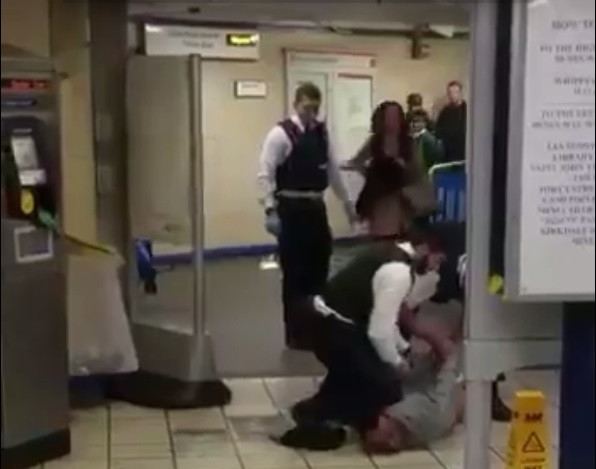Leytonstone Tube attack: US police should learn from UK on how to stop crime without guns

As dramatic video footage of four police officers subduing a knife-wielding suspect in Leytonstone Tube station in London went viral, the response of the police prompted me to send out a message on Twitter making note of the fact that unarmed officers had stopped a violent attacker without killing him.
My motivation for the message was simple: as a US citizen, I have watched – with increasing distress – videos showing heavily armed police officers in the US shooting and killing suspects at a disturbing rate. Critical reactions to my message on Twitter tended to revolve around two basic arguments.
First, it was proposed that had the attacker been carrying a gun or automatic rifle, the results would have been very different. Unarmed officers would have likely been shot and the death toll would have been far higher.
Second, the reason lethal force was not used against the suspect was the officers in question did not have guns, and there was a strong likelihood the suspect would have been shot had the officers been armed. Both of these arguments, however, miss the point.
Noting how Metropolitan Police officers had handled this particular attacker was not a comment on whether or not police should carry weapons but rather one about how guns are used by officers who are armed. The use of non-lethal force against this extremely dangerous individual in London was a reminder of how lethal force has been used in the US in cases where the suspect clearly posed far less of a threat – and in some cases, no threat.
It is worth pointing out that even when officers in the UK are armed, the use of deadly force is extremely rare, with only 55 deaths by police shootings over the past 24 years. In comparison, consider the fact that 59 people in the US were killed by the police in the first 24 days of 2015.
The sparse use of police weapons is not confined to the UK. In an astonishing statistic (by US standards), only 85 bullets were fired by police in Germany in the whole of 2011, with 39 of those used for warning shots. That year, a total of six people were killed by the police in Germany. Nearly 1,000 people have been killed in the US by police so far in 2015, and one in 10 of those victims was unarmed.
It seems self-evident that in democratic societies, the use of deadly force against a suspect should always be a last resort. The taking of a human life is the ultimate exercise in state power, even if that life belongs to someone guilty of committing – or in the process of committing – a crime. In the US, though, it is equally clear that deadly force has been the first resort in many cases, and disproportionately so when the suspect is non-white.
The racial dimension in the use of lethal force by the police in the US is particularly disturbing. Evidence shows black suspects shot and killed by police are more than twice as likely to be unarmed as white suspects. The 2014 killing of Laquan McDonald in Chicago was a striking example of the use of excessive, deadly force against an African-American youth.
Laquan, who had been behaving erratically and was reported to have been carrying a knife, was confronted by several officers in a Chicago street. Video footage shows him making no threatening moves toward officers, yet he was shot 16 times, with most of the bullets entering his body as he lay defenceless on the ground. In their report, police note Laquan had "lunged" at officers but video showed no such action.
In another well-documented case, an unarmed Walter Scott was stopped by police in South Carolina for a traffic violation. Scott, for reasons unknown, ran from arresting officer Michael Slager, who proceeded to shoot him in the back several times as he ran away, killing him.
In debates over the use of firearms and lethal force by police, it is very easy to speak of terrorism and bring up the recent events in Paris. But this is a red herring. I don't think there is anyone on the political Left or Right who would argue that police don't have the right to use lethal force against attackers (whether terrorist or not) killing civilians or police, or clearly threatening to kill civilians or police.
The real questions are about (1) the willingness of US police to use such force in everyday policing, (2) a culture in the US in which police feel they have the right to kill suspects who are not posing a clear threat, and (3) the use of violence in disproportionate measure against racial minorities in the US.
The officers involved in subduing the suspect in Leytonstone not only saved lives in the Tube station that December evening, they also contributed to the debate on the use of lethal force in the US: a debate of particular urgency for minorities.
Christian Christensen is Professor of Journalism at Stockholm University in Sweden.
© Copyright IBTimes 2025. All rights reserved.






















